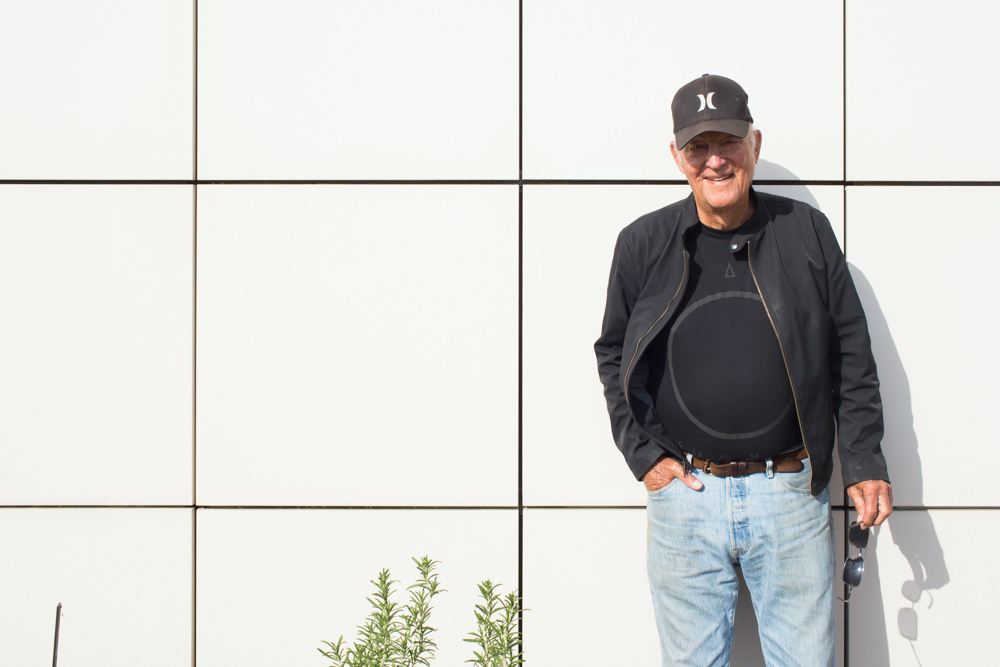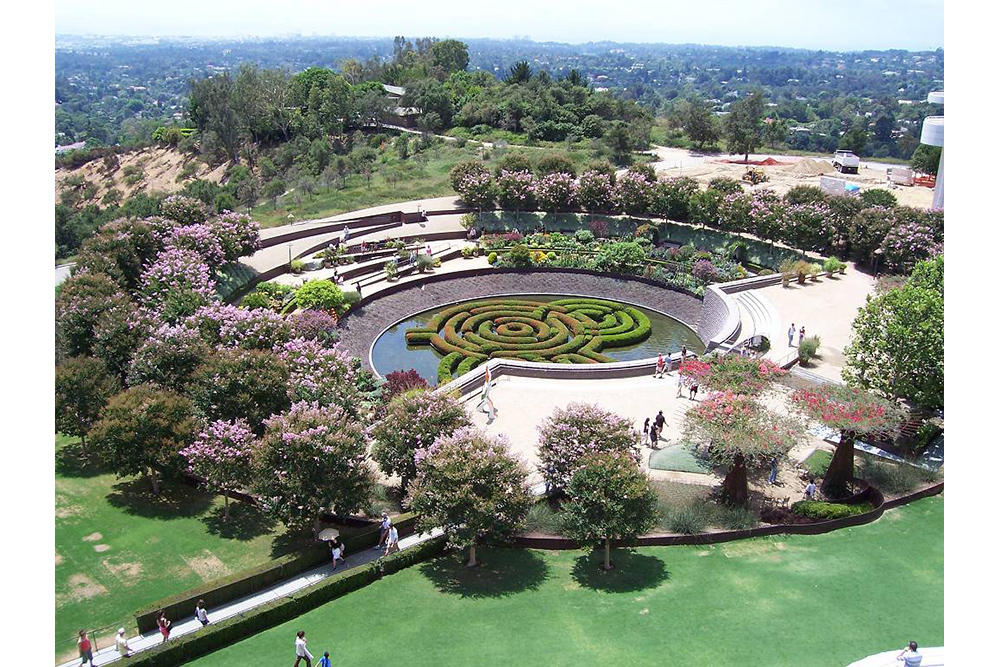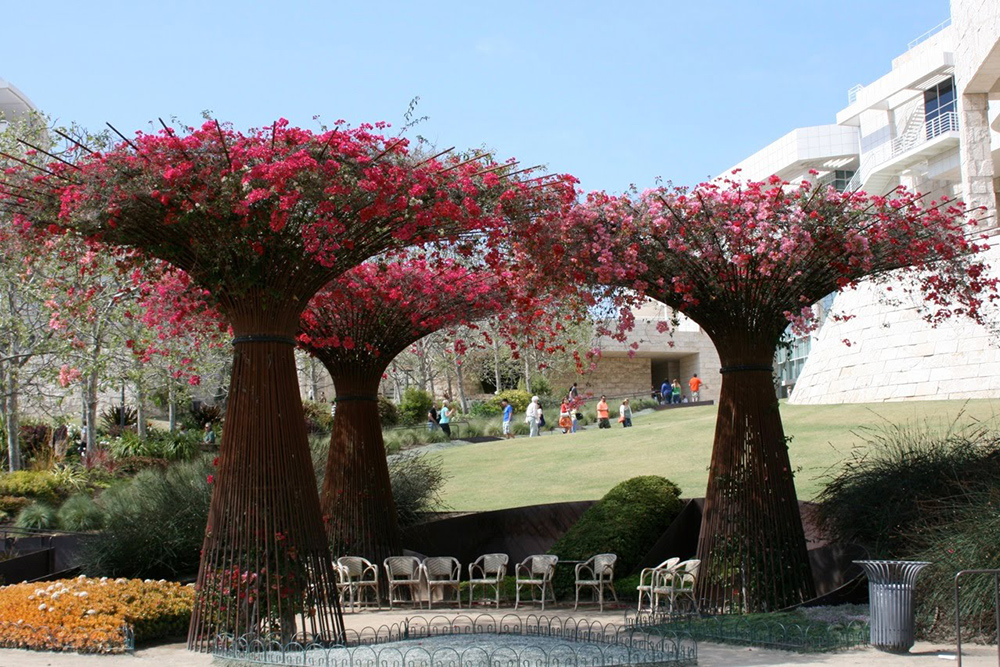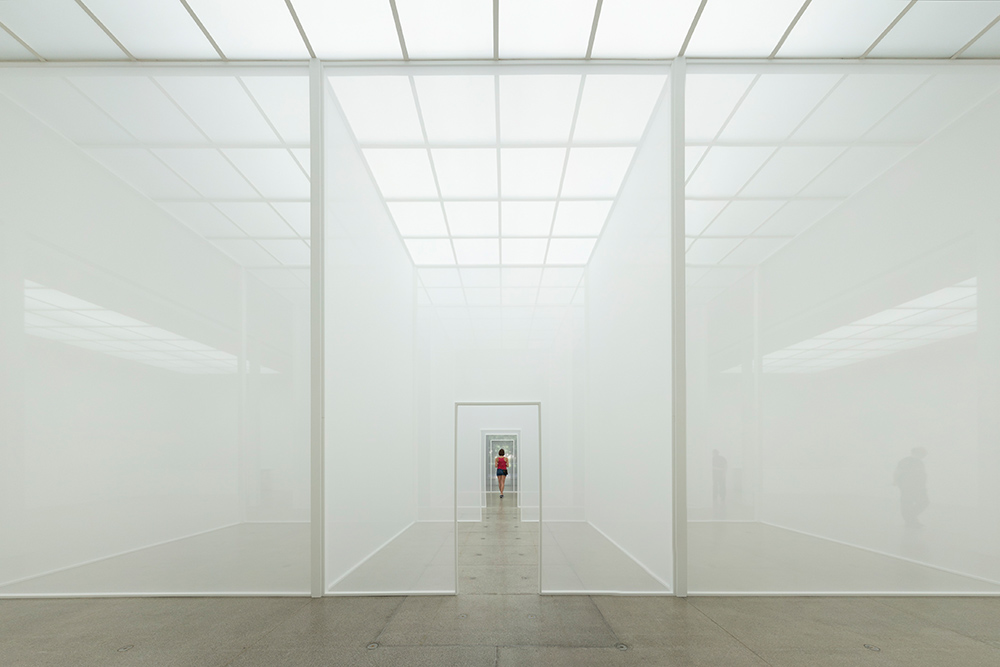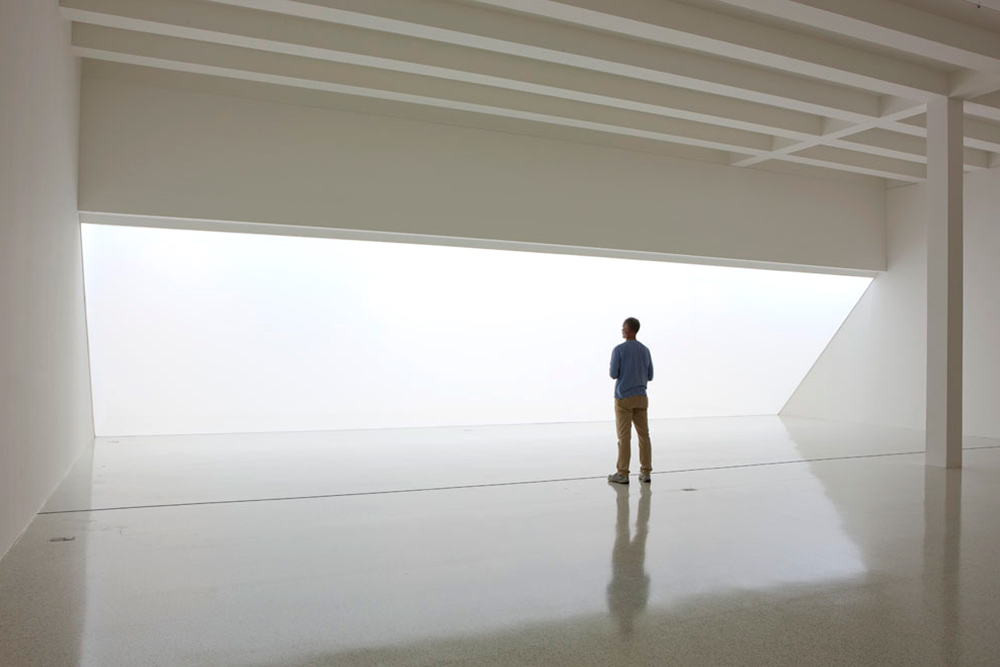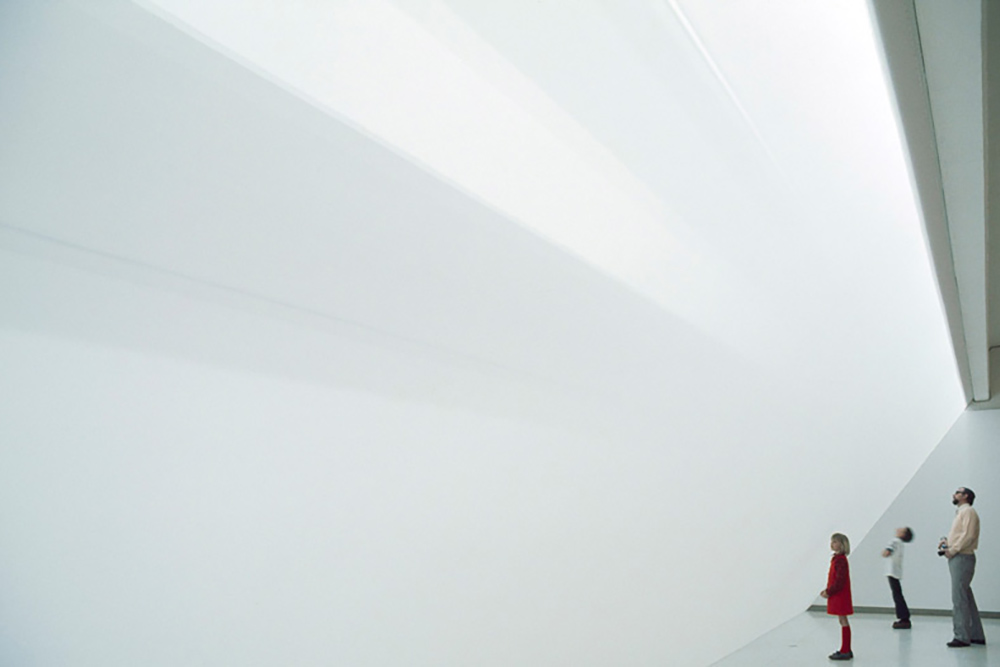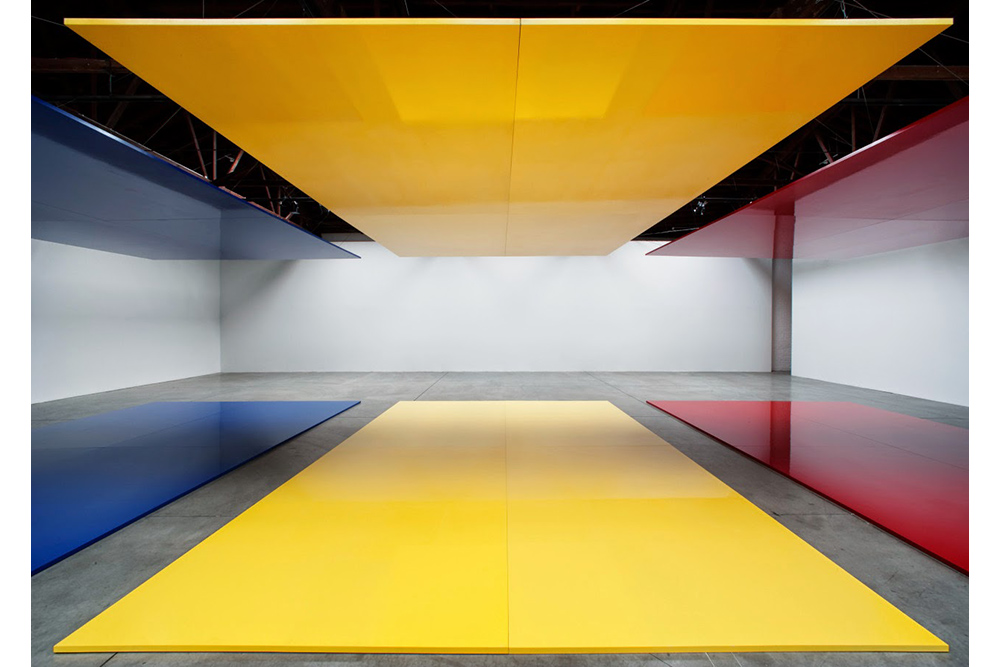Red Ruffles Lettuce, Blue Cheese, Bacon and Avocado
Robert Irwin’s Brentwood Cobb Salad

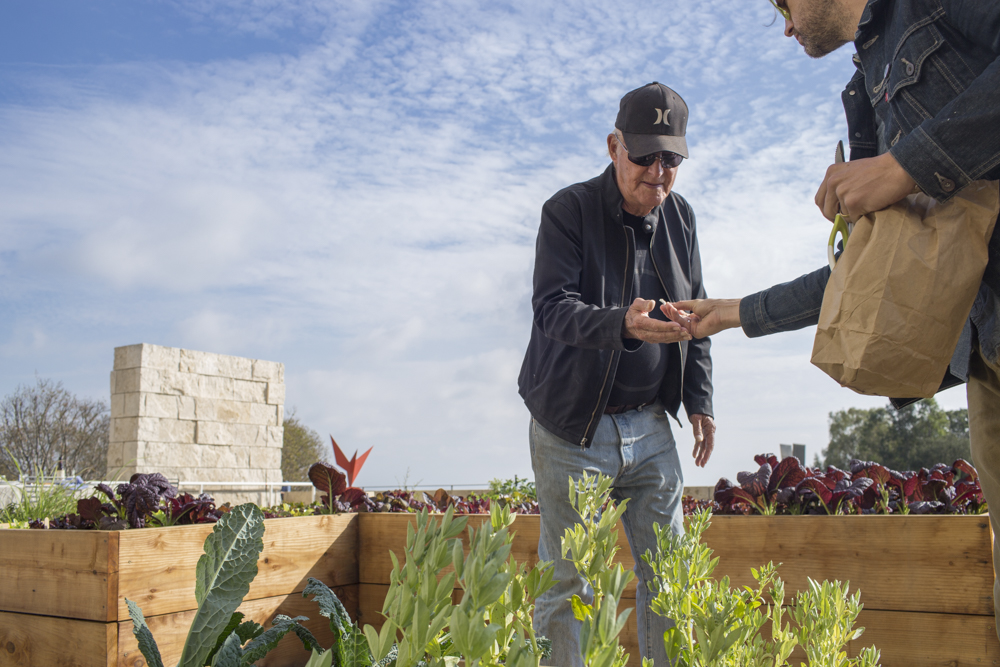

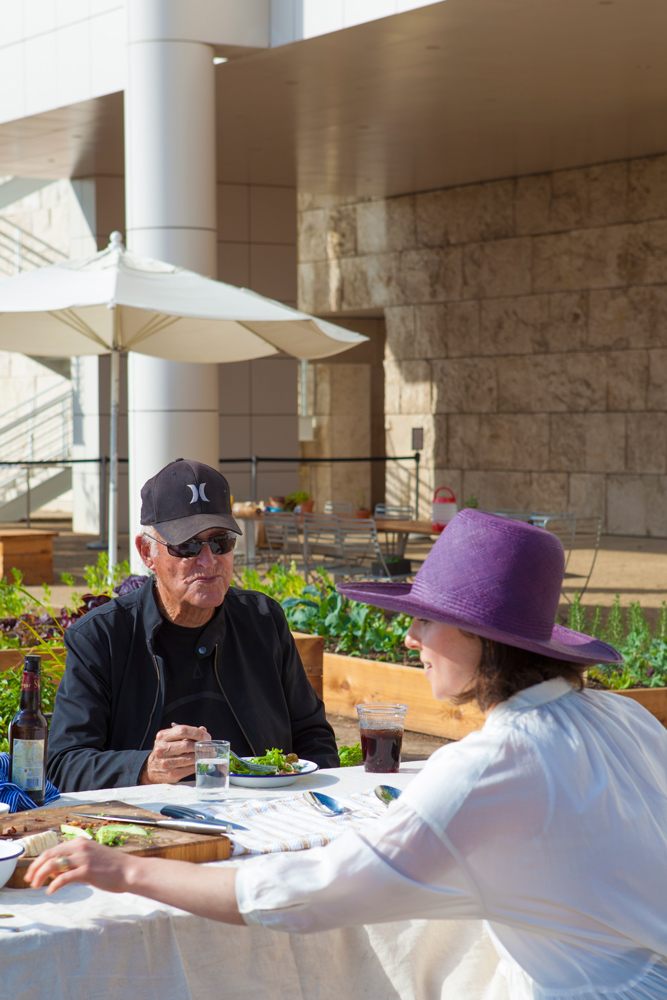

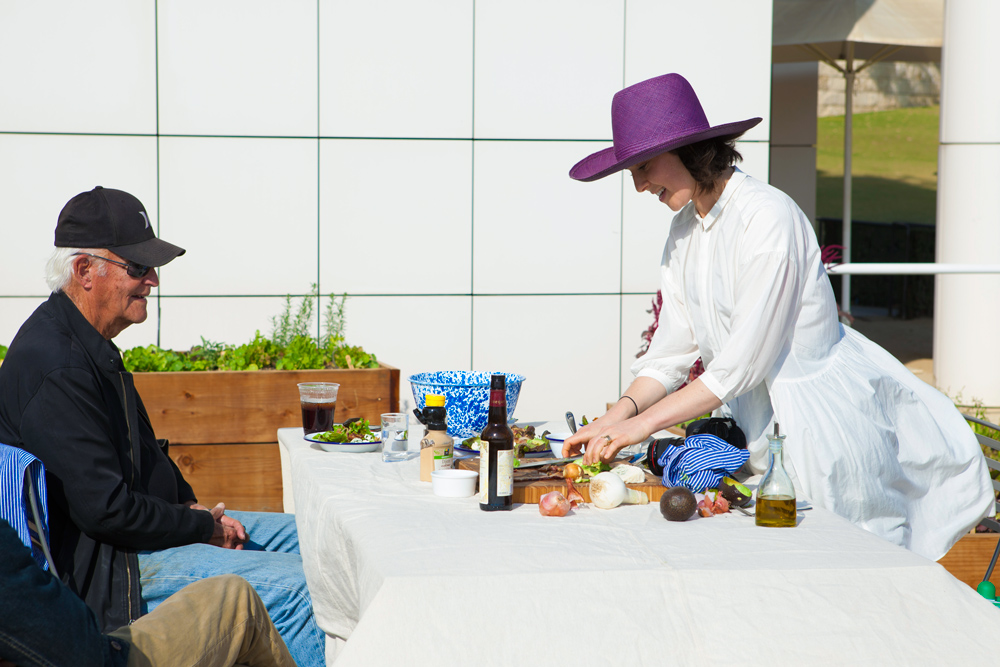
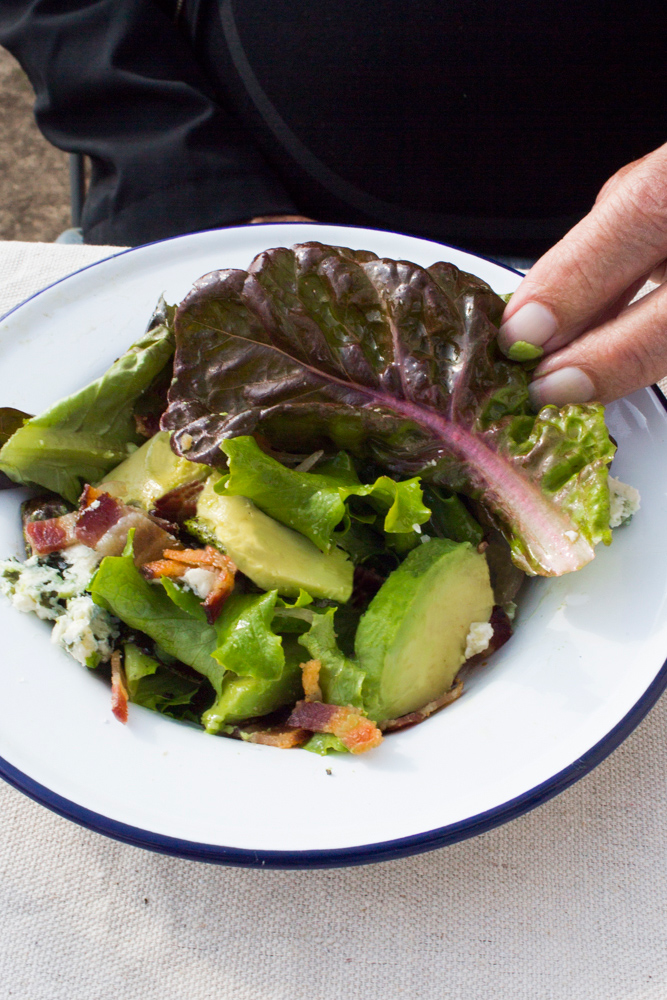
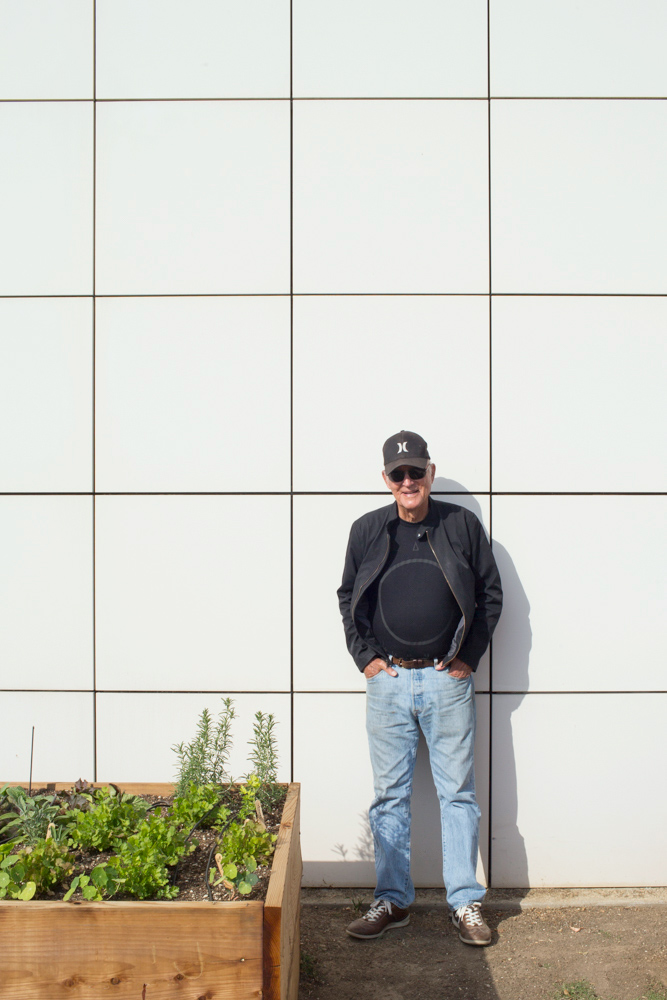
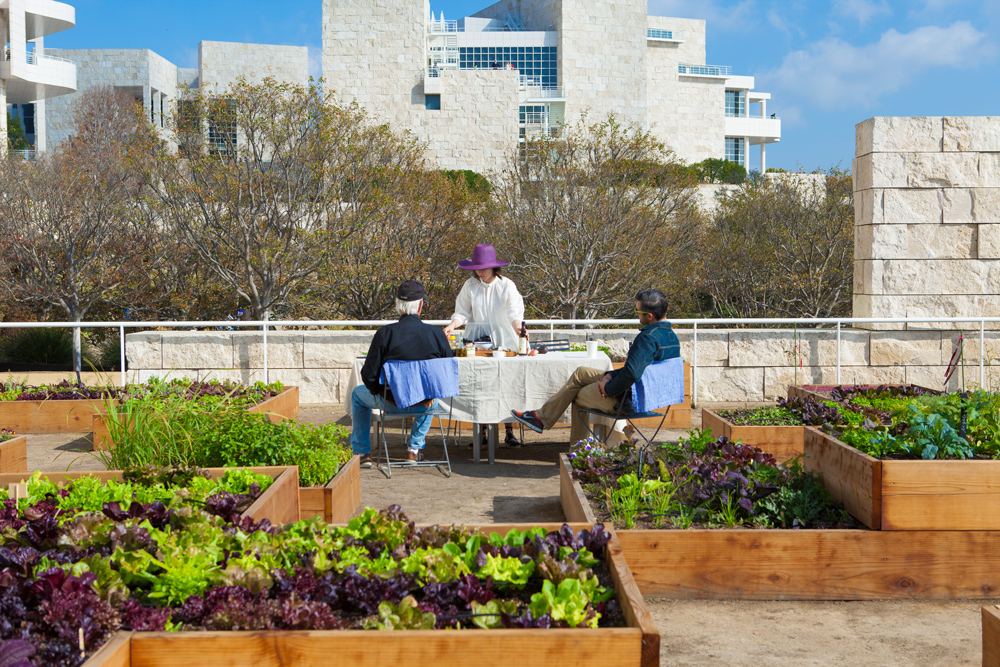
POSTED UNDER
- Getty Salad Garden
INGREDIENTS
- AVOCADO,
- bacon,
- blue cheese,
- lettuce,
- red leaf lettuce
RECIPE
DIFFICULTY
EASY
SERVES
2
PREP TIME
10 MINS
Salad
-
1headred ruffles or red oak lettuce
-
2slicesnitrate-free organic bacon, sliced
-
1/4cupRoquefort cheese
-
1smallhass avocado
-
sea salt
-
black pepper
Dressing
-
1/2smallshallot
-
1tbssherry vinegar
-
1/2tspdijon mustard
-
4tbsextra virgin olive oil
POSTED UNDER
- Getty Salad Garden
INGREDIENTS
- AVOCADO,
- bacon,
- blue cheese,
- lettuce,
- red leaf lettuce
The Getty Salad Garden would not have been complete without the inclusion of Robert Irwin, the California Light and Space artist who began his crusade for a garden at The Getty Museum almost 20 years ago. The resultant Getty Central Garden was the first garden Irwin ever designed, and it continues to draw thousands of visitors each day, who walk its winding paths with such enthusiasm, you would think they were in an amusement park as opposed to a museum. Unhindered by lack of experience or professional training, Irwin proved to a whole lot of naysayers that it is precisely an artist who is best qualified to consider space, light, ecology and most importantly, human experience all at once. As Irwin describes it, “From my point of view, and maybe you are finding this too, the people that come to look at the garden respond very differently from people in the art world — they all want to hug you and thank you. I had never experienced that before. The art world can be rough — you can get your ass kicked.” And while that is true, Irwin’s fight to design the Central Garden was so dramatic, there was a documentary made about his struggle with The Getty’s architect, Richard Meier; let’s just say Robert Irwin does not appear to be getting his ass kicked in the film.
Robert Irwin has always been ahead of his time, unbound by any singular medium or job title, he has created light installations, designed airports, gardens and landscapes. His work is radically democratic, appealing to our senses first, taking hold of the body before it evens hits the cognitive brain. More than anything, Irwin provides a model for a life-long commitment to unbridled creativity, which would explain his increasingly busy schedule at the age of 85. When I asked Irwin to make a salad with me at The Getty, he replied, “I’ll meet you at the garden, then I can take you out for my favorite salad in Brentwood.” When we discovered that his favorite restaurant was closed, I offered to approximate his Brentwood salad for him in the Salad Garden, over looking his Central Garden just next door. Bob (yup, we are on a nickname basis now), lamented the absence of frisée in the Salad Garden, but overall, he said it was pretty good.
I was way too nervous to focus on photography, so please excuse the sparse coverage of the salad itself, and read my conversation with one of the most important artists of our time.
Robert Irwin in His Own Words
Julia Sherman: Something people ask me is how an artist like myself convinces museums to let her make gardens. Can I ask the same of you?
Robert Irwin: It took me forever to convince the people at The Getty that the Central Garden was an asset. There was a time when they all wanted to get rid of it.
JS: Why was that?
RI: Richard Meier didn’t want it. He had his own plan. I just kept insisting on it, but it was a war.
JS: How long did you go back and forth with Meier and the board, petitioning for your design?
RI: Richard Meier had his own ideas about what the garden should be. It took a year and a half of nightly meetings every week or month in his office. He had someone whose job it was to look at my plans and immediately weigh the economics. It was somebody else’s job to look at my plans in terms of practicality, and then he had someone–which was the most amusing thing– who would speak on his behalf.
JS: Because he couldn’t speak for himself?
RI: Well that’s the question. Yeah, he probably could, but it’s more effective to have somebody speak for you. That person was called the “Intellectual Apologist,” and over a period of a year and a half I went through seven “Intellectual Apologists.” He had to hire them and fire them because I was kicking their asses.
JS: At that point, you had already drawn the plans for the garden and been working with the gardener and everything?
RI: Yeah. The gardener was the most contentious thing because they had to pay him a yearly salary. I kept telling them, the garden costs are ten cents on the dollar, considering how many people were enjoying the garden and how much it added to the overall experience here. But, gardens were not these people’s cup of tea; they had never even looked at a garden before.
JS: How do you think the garden is received by the museum goers now?
RI: From my point of view, and maybe you are finding this too, the people that come to look at the garden respond very differently from people in the art world — they all want to hug you and thank you. I had never experienced that before. The art world can be rough — you can get your ass kicked
JS: Yes, I have really appreciated my foray into the garden community.
RI: Oh, its totally different. They are knowledgeable about gardens, they are passionate about them, and they can really appreciate it.
JS: I don’t consider my garden artwork, per se.
RI: I don’t call it mine artwork either. Fundamentally, we are in the business of aesthetics, and aesthetics touches many bases. The art world has a tendency to think it has a hold on that, which is a ridiculous idea. I think you and I have proved that wrong.
JS: After you made this garden, did you make any other gardens?
RI: I never planted a plant before I did this thing. I haven’t done another garden per se, but I’ve used a lot of the same materials in subsequent projects. I have always had a policy of just taking what projects come my way; over the years my opportunities became larger but in the beginning… I was 50 years old when the IRS came and told me I could not longer file my taxes as an artist.
JS: Why?
RI: Because I didn’t make any money off my artwork! To the IRS, everything is about money.
JS: But you can run a business at a loss…
RI: For only so long… They told me, “cease and desist, my friend.” I was 50 years old and they told me I couldn’t write off my studio, my materials or my supplies.
JS: So what did you do?
R: When I didn’t have a studio anymore, I said I could work for anybody for anything and I went on the road. Most of the invitations I got were to visit universities and critique students. The problem was that in the 60s, the students didn’t trust you, so if you accepted money from the university, you were obviously one of the bad guys. So I lectured for free. But, I actually spent time in every state in the union except two. I’ve done a thousand, maybe more visits.
JS: Do you still do that?
R: Yeah, but I haven’t been asked much lately.
JS: That is surprising.
RI: Maybe I have run my string — I don’t know. It was a fun thing to do.
JS: But you were never a teacher?
R: I taught very briefly. I had a lot of very good students. I just had dinner with one last night– Ed Ruscha.
JS: He was one of your students?
RI: Yeah. I also taught Larry Bell.
JS: Larry Bell is coming here tomorrow. He seems like the greatest guy–the nicest emailer I have ever met.
RI: He is a very social person. He likes to be out and around and about.
JS: We are screening a film he made with Ed Ruscha called “Premium.” The film ends with Larry burying his date in salad and dressing her in oil and vinegar. I asked Larry Bell if I could bury him in salad in the garden. He said we should meet first and then discuss.
RI: Great answer.
JS: I thought that was fair. So, you come back to They Getty to check up on your garden and see how it’s going? How involved are you in the maintenance at this point?
RI: I still have the same gardener and we meet regularly. We used to take four trips a year. We went some great distance away—as far as the Canadian border in a truck. We would build shelves inside the truck as we drove, filling it up with plants from all the mom and pop nurseries on the way.
JS: Four times a year? No way!
RI: Oh yeah. We had to. When you go to a nursery 75% of the plants are not performing. Then you come back, suddenly they’re in season and boom! We also wanted to experiment with plants from other climates, and see how they would perform. We brought plants down from Seattle and Wyoming, and we had them growing in San Diego for a year just to see what would do. Some didn’t perform at all and others were brilliant.
JS: You mean, because they were used to such a different climate?
RI: There are plants that are considered weeds in Washington and down here, they do very well.
JS: After you did this project did you have an interest in studying botany formally, or would that have killed the improvisational aspect for you?
R: No, I don’t think it would kill it, but I was more focused on the other opportunities that came my way.
JS: When I called you recently you were driving to Marfa, TX. What are you working on there?
RI: The Judd Foundation gave me an old hospital building that is falling down–a ruin. We are rebuilding it. I just brought in about 200 tons of salt columns to put out in the courtyard to make a sculpture. It’s been 15 years that I’ve been working on it, or trying to.
JS: You’ve been working on this for 15 years?
RI: Yes, 15 years. Its all about persistence.
JS: Are you a very patient person?
RI: I never thought of myself that way. To say that I would work for anybody for anything, was not a policy that artists perused back in the day. For example, I tried to redesign the Miami airport. That was very complicated and I didn’t get it done in the end.
JS: What inspired you to propose a redesign of the airport?
RI: I convinced the owner of the airport that he needed an aesthetician. He was a good businessman, but the design of the airport was notoriously confusing. It was not a nice place to be. Imagine, you’re in Miami on your way to the airport. You are looking for the airport, following the signs. Just when you see planes taking off, the road veers off in the opposite direction. It is counterintuitive, so you assume you’ve made a mistake. And right there, in this place of confusion, there is a large sculpture of the word, “Flight.” It’s a nice sculpture and that is their idea of public art, but it’s a distraction. So all the decisions there are actually bad decisions because nobody has really followed it all the way through. So, I checked everything–the toll gates, the lobbies, everything, and rethought them all.
JS: So you did all the design on speculation without having a commitment from him?
R: I didn’t have anything. That’s how you do it.
JS: Did you always imagine that making art would transition into architecture?
RI: Absolutely not. When I was younger I wasn’t thinking about that, I was actually having a wonderful time. One of the things that pisses them off in New York is to tell them that you had a happy childhood. You’re supposed to suffer, but I didn’t. Growing up in Southern California was very pleasurable, going to Catalina and going to the mountains…
JS: Have you ever lived on the East Coast?
R: When I was working on the gardens at Dia Beacon, I lived on the Hudson river. A very beautiful place, famous for its light. One night my wife and I having dinner and we started talking about how we felt. We realized we were both deeply depressed. And we realized that the light there was really melancholy, and that the light in California is not melancholy, but very vibrant.
JS: That’s interesting. Conversely, I lived in Los Angeles for three years and I really missed the melancholy aspects of New York seasons and light. In L.A. I felt like I was always on the up, but I really need the up and down.
R: The light is so important and it really tunes who you are.
JS: So, do you have a garden in San Diego?
RI: No, my wife does the gardening. I work a lot. I have nine projects going right now at various stages.
JS: Does the IRS believe you are an artist now?
RI: Yeah they do.
JS: Or, is the problem that now they think you’re an architect and a gardener?
RI: That’s very uncomfortable for me. A few years ago, a guy invited me to come to Chicago to speak at an ecological conference. I declined because I was too busy and he said, “Aren’t you interested in ecology?” I said, “What the fuck do you think I’ve been doing all my life?” To me, these issues are an aesthetic problem first. If we really appreciated the beauty of the world we are in, we wouldn’t do the damage we do.
JS: I am pretty tough, but I still take it personally when dealing with the politics around public work and negotiating with institutions. Sometimes I wonder, did Bob Irwin get upset when Richard Meier brought in his whole team to fight him? You didn’t get upset. Or did you?
RI: It tested my patience. I don’t know. I just hung in there. But, I still can’t figure it out, how did you get here?
JS: I guess I am pretty persistent too. [smiles]
